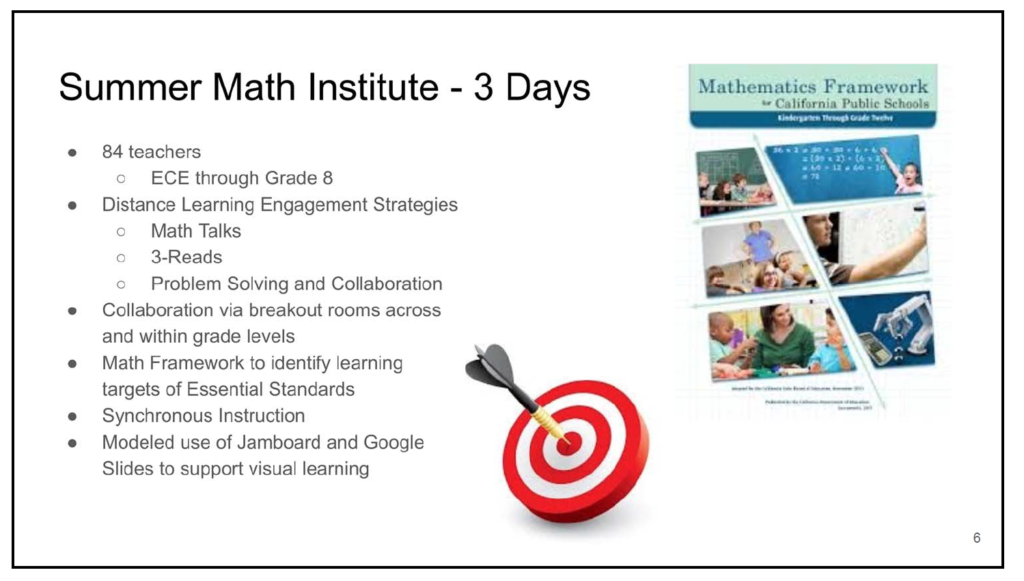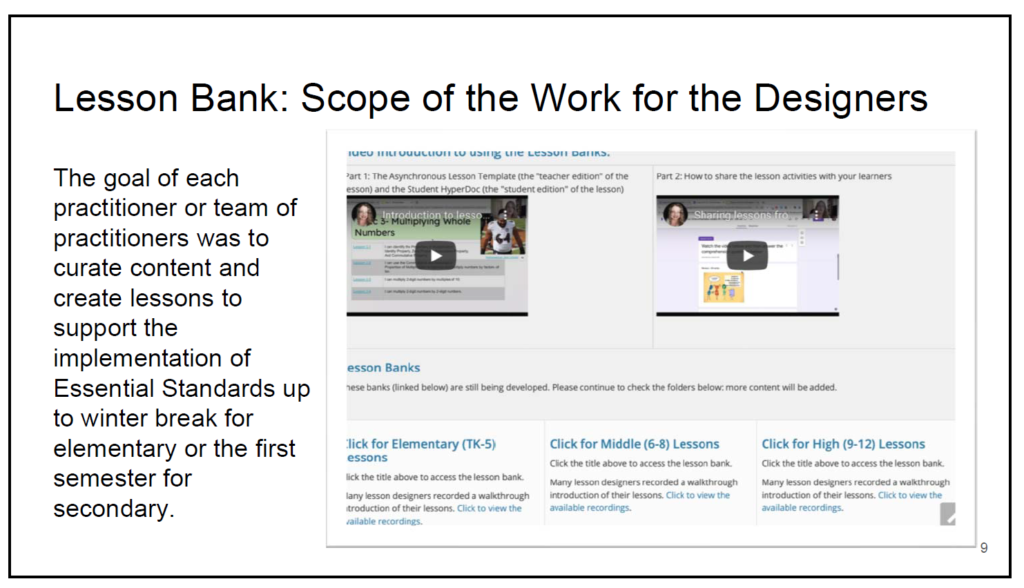The SJUSD Approach
Listen
San Juan USD culture emphasizes continuous improvement and allows for more inclusion and active listening. The collective group iterates over time, whether it’s on a side letter or frequently asked questions, continually refining and revising processes based on feedback.
To support the planning for the 2020-21 school year, the district gathered parent, student, and staff feedback. In the more than 9,000 responses to the district’s family survey, all schools, grade levels, and grade spans across the district were represented. Overall, 47% of respondents were very and moderately satisfied with the distance learning that was offered during the spring. When surveyed about the options for the next school year, over 50% of respondents, across all grade spans, reported a preference for the traditional model, followed by hybrid and distance learning models.
Following the initial review of these results, SJUSD continued to plan for the three learning options (distance, hybrid, and traditional) in partnership with labor leadership and work groups. Parent, student, and staff feedback were analyzed in relation to these options to inform next steps. Practitioners were recruited to assist with the development of distance learning lessons aligned to standards and to support professional learning for certificated and classified staff.
On June 29, 2020, Governor Newsom signed Senate Bill (SB) 98 Education Finance: Education Omnibus Budget Trailer Bill. The bill requires the completion of a Learning Continuity and Attendance Plan that specifies the instruction and support school districts will provide pupils in the 2020–21 school year as a result of the uncertainty caused by COVID-19. The successful completion of the plan development and adoption requires school districts to engage stakeholders, including teachers, principals, administrators, other school personnel, bargaining units, parents, and students.
Because of San Juan’s collaborative structure, which is based on continuous improvement, a more inclusive process that was based on listening to stakeholder needs was adopted. The collaborative structure made easier iterations of drafting, reviewing, and revising instructional recommendations that informed the side letters and reports on the progress of proposals.. Further, the content and agreements from many of the letters and related working-group sessions was used to inform the draft Learning Continuity and Attendance Plan that was presented to the SJUSD school board on September 8, 2020.
In Their Words
In the short audio clips below, San Juan USD and San Juan Teachers Association representatives describe their efforts to adapt amid the pandemic.
Collectively Adapting in an Era of Change
Melissa Bassenelii, Deputy Superintendent, Schools and Student Support, San Juan Unified School District:
Another complicating factor is when we get legislation put down on us, that interrupts what you have been building along the way. For example, we had been talking about our modified in-person instruction plan, still working on distance learning, but also planning for modified in-person. So when SB 98 came out and the requirement for daily live synchronous instruction threw a wrench in the model we had co-created together. So we were trying to solve that piece, and then we shifted into the full distance learning model, put a pin in the development of the modified in-person, we had lengthy conversation on what is reasonable in terms of the amount of time for synchronous and asynchronous given the instructional-minute requirement and requirement for daily live and what is developmentally appropriate by age groups because we are planning for TK-12 in our system. What is going to set up our practitioners for success, what is doable in terms of schedules for teachers, schedules for kids, what is reasonable. Workgroups: secondary and elementary teams, some of the pressure points were aligned as a K-12 system, again, thinking about what is developmentally appropriate and scaffolding up. Just in terms of scheduling, for example, at elementary, in addition to synchronous classroom time, also have synchronous services, like English-language development, specialized teachers who teach art, music, PE trying to make space for that and the shared interest in developing the whole child. The emphasis of supporting the whole child was written into many of the side letters. So that helped us anchor the conversation in the broad array of services that are necessary for students, in addition to classroom instruction. It’s tricky because everyone comes to the table about what is reasonable for synchronous and what is developmentally appropriate and when you look at live screen-time research, it’s all pre-COVID. So you are building the plane as you are flying it and trying to determine what is doable for teachers and students.
Shannan Brown, executive director of the San Juan Teachers Association:
For example, if we say we need X number of minutes are really important for us to be synchronous, then we would say okay, if that means this amount of work for staff, then what are the areas that we can relieve pressure from their workload because what we are asking them to do is more. We had a lot of those conversations for our Special Education staff because of the folks that are both case managers, as well as service delivery providers, they are really getting crunched at this time, so we would look at what do they absolutely have to do, then what are some ways we relieve pressure, what are creative ways that we can pay attention to workload and pressure points that help us get to agreement on a particular interest.
Teaching and Learning
In response to listening to the concerns staff and parents shared based on distance learning in the spring, district and union leadership came together to collaborate on a strategy to support its educators. Within a very short period of time, more than 80 teachers across San Juan USD convened over the summer to create standards-focused lessons for use in distance learning, at each grade level and in all core subjects, to provide consistent and aligned curriculum options. With more time to design and launch the program, San Juan is better positioned to provide more consistency in scheduling and use of technology tools.
Kristan Schnepp, Senior Director of Professional Learning and Innovation provided an overview of the collaboration between her department and SJTA to establish a process for comprehensive design and development of lesson banks to provide synchronous and asynchronous resources for educators.
Nicole Naditz and her Instructional Technology team presented EdCamp designed to support high-quality distance learning for a large number of educators. Developed and coordinated by SJUSD departments representing Professional Learning and Innovation, System of Professional Growth, Family and Community Engagement, Equity and Student Achievement, and Counseling in partnership with SJTA, more than 450 hours of professional learning was provided and available for on-demand training.
To support the shift in math instruction with distance learning, Stacey Shorey and her PLI Math team led a 3-day summer math institute. Using the mathematics frameworks, teachers practices strategies and learned about formative assessment practices to support their teaching and instruction.

SJTA President, Bill Simmons presented on the teacher involvement with the Lesson Bank development and implementation with over 80 teachers contributing to this process.

Resources: